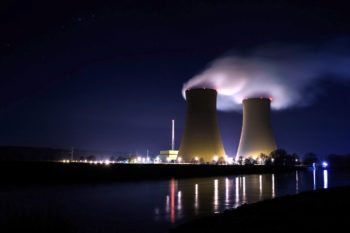
And since Musk foresees people living along the equator of Mars, the radioactive blast would not affect them or any undiscovered life that might be buried beneath the soil. Once the gases are released into the planet’s already thin atmosphere, Mars would presumably warm up. But unlike most of his ideas, this one fails on just about every scientific principle (Didn’t he read the book The Martian?).
According to ZME Science, Mars simply isn’t a suitable planet for terraforming of any kind. That’s because its atmosphere is very thin, roughly “1% as thick as the Earth’s,” and “solar winds are constantly stripping it even further.” And aside from simply warming up the planet, there are other issues as well. The first being that Mars has no magnetic field.
The magnetic field is what is generated by a planet’s core, and unlike the Earth’s, the Martian core is “geologically dead” as its “core solidified a long time ago.” Our core is what keeps radiation from the cosmos, and especially our sun, from radiating all life out of existence. Also, the planet’s core generates a gravitational field, and the “gravity on Mars is .38 that of Earth,” far too low to keep its atmosphere from flittering out into space.
ZME also reports that Mars has “no plate tectonics to recycle carbon and water and rebuild eroded land.” It also has “no large moon to stabilize the axial tilt and provide tides” and has a “much more elliptical orbit, which means much more erratic climate.” Mars has a “much higher rate of impacts due to its proximity to Jupiter and the asteroid belt” as well as “no mountain chains to break up atmospheric currents and release precipitation.”
The surface of Mars is also covered in toxic perchlorates (salts derived from perchloric acid), which are used in fertilizers and making rocket fuel, but pose a serious health hazard to humans. Space.com also writes that “any humans exploring Mars will find it hard to avoid the finest of dust particles” as it gets into “everything…certainly into your habitat.”
Barring someway you could rid the entire surface of Mars of this chemical, ZME writes the “asymmetry between hemispheres” means there would be “all land on one side and all ocean on the other.” But since the planet has only a negligible amount of water (compared to Earth) stored at its poles, melting the ice caps on each end would create a toxic brew of water, radiation, and chemicals that would occupy only one hemisphere of the planet.
Musk’s vision of terraforming Mars dates back to 2001, when he conceptualized a “project to land a miniature experimental greenhouse on Mars, containing food crops growing on Martian” soil. He called it “Martian Oasis.” In 2002, he founded SpaceX with the long-term goal of creating a “spacefaring civilization.”
In 2011, Musk said in a Wall Street Journal interview that he plans to send humans to Mars within 10-20 years. And according to his biography by Ashlee Vance, he plans to have a colony of 80,000 people by 2040. So it would seem nuking Mars into an even more inhospitable planet to attain that goal is currently within his scope. Supervillain or not, though, Elon Musk wants to see people on Mars, whether it’s practical or not.















